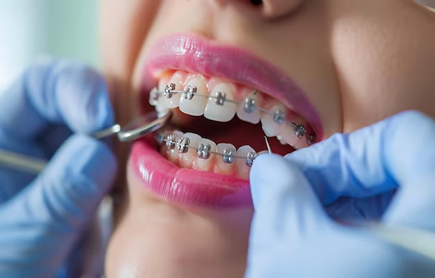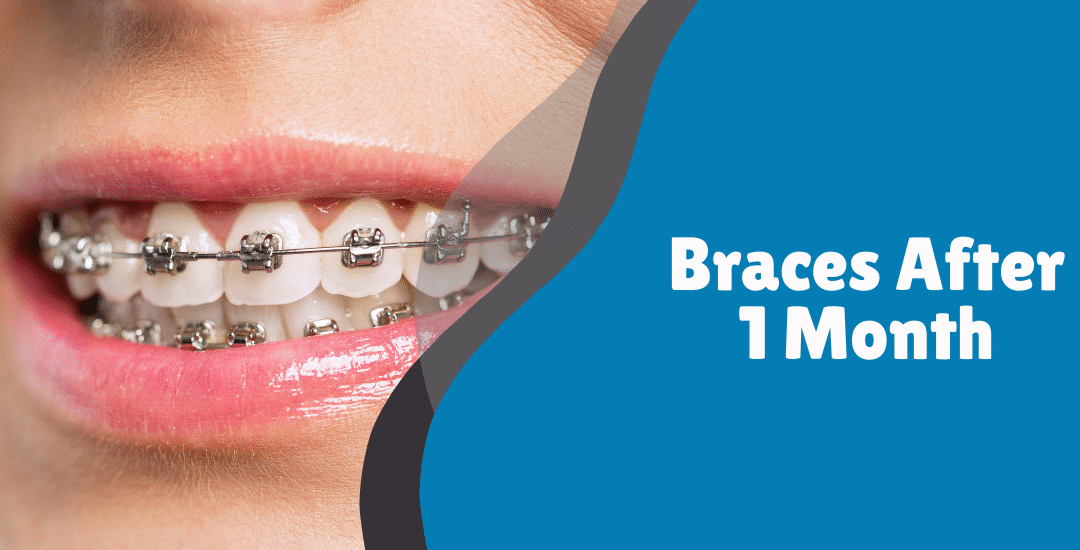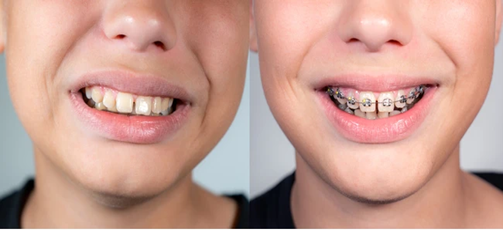Braces are a reliable and time-tested solution for straightening teeth and correcting bite issues. During the initial weeks, it’s natural to feel a bit of tightness, slight discomfort, and a learning curve when it comes to daily habits. But as you approach the four-week mark, many start wondering what to expect with braces after 1 month.
“This is when the subtle progress becomes visible, and your mouth begins adjusting to its new normal,” shares Dr. Alisha Khan, a highly regarded dentist in Chembur. “Though it’s early, this stage marks a pivotal point in your orthodontic journey.”
Dr. Alisha Khan leads Evershine Dental Clinic in Chembur, a renowned name in orthodontic care. Her experience spans over a decade of transforming smiles with a patient-first approach. Whether it’s your first adjustment or ongoing follow-ups, the braces after 1 month milestone is one she helps each patient navigate with ease and confidence.
What will happen after 1 month of braces?
Visible Movement
Your teeth will start to show slight straightening—gaps may reduce, teeth align more on the arch wire. This is typical 1 month braces progress.
Wire Pressure
The arch wire gently pushes teeth into position, which can feel tight or tender.
Bracket Adjustments
Your orthodontist will check if any brackets are loose or broken—repairs may be needed.
Wire Issues
If wires are poking painfully, that means your wire has shifted—clip or relief wax can help.
Oral Hygiene Routine
Brushing and flossing around brackets becomes easier, yet still requires diligence to avoid plaque buildup.
Speech & Comfort
You may notice slight changes in your speech or tongue irritation, but by now, you’re adapting well.
Diet Shift
Soft foods should continue to be your go-to until you’re more comfortable chewing
Gum Sensitivity
Mild swelling or tenderness of gums can happen as your teeth pivot.
Noticing changes in your teeth already? Connect with an orthodontic specialist to stay on track.
Can braces straighten teeth in 1 month?
Honestly, full alignment in one month is unlikely—but dramatic changes are still a work in progress. Typically, braces take 12 to 24 months to fully straighten teeth, depending on complexity and patient age. That said, by the 1-month mark, you’ll notice encouraging signs:
- Minor shifting of teeth into a straighter form
- Gaps starting to close or open slightly
- The arch-wire molding begins its job
Still, it’s essential to have patience. Dr. Alisha Khan explains, “Early movement sets the stage for gradual yet steady realignment. Expect progress, but know the finish line is still ahead.” Regular follow-ups ensure your treatment stays on track for optimal results.
What can you eat in the first month with braces

Here’s a helpful list to guide your meals:
- Soft Fruits & Veggies: Bananas, steamed carrots, ripe peaches
- Dairy: Yogurt, soft cheese, smoothies
- Grains: Soft bread, oatmeal, pasta, rice
- Proteins: Scrambled eggs, soft-cooked chicken or fish, tofu
- Snacks: Mashed potatoes, pudding, applesauce
Avoid these to protect brackets and wires:
- Crunchy items: chips, nuts, popcorn
- Chewy treats: caramels, chewing gum
- Hard foods: whole apples, raw carrots (unless cut small)
A nutritious, soft diet supports healing while protecting your aligners.
Do braces hurt after 1 month?

One month later, the discomfort you experienced in the first few days typically will subside. Some tenderness from time to time is not unusual, particularly after an adjustment visit. The pressure applied to your teeth during these visits may lead to a low-grade ache that lasts for one or two days, especially near the teeth that are moving the most.
Also, your lips, tongue, or cheeks may continue to experience some discomfort from brackets or wires. Although your mouth has probably adjusted to most of the equipment, some spots may still be sensitive—particularly if wires are poking painfully or brackets are loose or broken.
How to manage pain in first month with braces?
Following are elaborated ways to get relief from pain during your first month of braces:
Make use of orthodontic wax:
Place wax over bumpy brackets or wires to minimize irritation in your cheeks and lips.
Rinse with salt water:
Warm saltwater rinse (1 tsp of salt in a glass of warm water) soothes sore gums and eases inflammation.
Apply cold compress:
Run an ice pack wrapped in a cloth across your jaw for 10–15 minutes to relieve pain.
Take painkiller medication:
Over-the-counter options like ibuprofen or paracetamol can help manage soreness after adjustments. Always follow dosage guidelines.
Stay hydrated:
Drinking cold water throughout the day can offer a numbing effect and help rinse away irritants.
Use orthodontic silicone strips:
These can be placed over brackets for added comfort during sleeping or talking.
Brush with a soft-bristled toothbrush:
It reduces additional pressure on sensitive gums and protects brackets from damage.
Wondering when a braces issue needs professional attention? Let’s discuss the signs that mean it’s time to reach out to your dentist.
When to contact your dentist

Understanding the signs that need attention prevents complications:
- Severe pain lasting over 48 hours
- Brackets are loose or broken
- Wires are poking painfully and wax doesn’t help
- Swelling or infection around a sore (pus, fever, redness)
- Irritation that worsens over time
- Jaw pain or clicking beyond mild soreness
If any of the above occur, consult your dentist promptly to prevent delays or damage to your braces journey.
Conclusion
Reaching the one-month mark with braces is a significant step in your smile journey. By now, you’re adjusting to the daily routine, seeing early signs of tooth movement, and learning how to manage occasional discomfort. These initial changes are the foundation of long-term success.
Remember, each small shift brings you closer to your ideal alignment. With consistent care, regular check-ins, and guidance from a competent orthodontic professional like Dr. Alisha Khan, the process becomes smoother and more manageable.
Frequently Asked Questions
Can I eat pizza with braces in the first month?
How often will I visit the orthodontist after the first month?
Are teeth supposed to wiggle after a month of braces?
Can I play sports with braces on?
What should I do if wires are poking painfully?
How long do braces take to work?
What happens if brackets are loose or broken?
Reference links:
https://orthodonticsaustralia.org.au/life-before-after-braces/
https://www.3mindia.in/3M/en_IN/types-of-braces-and-treatment-in/life-with-braces/
Disclaimer: The information shared in this content is for educational purposes and not for promotional use.


